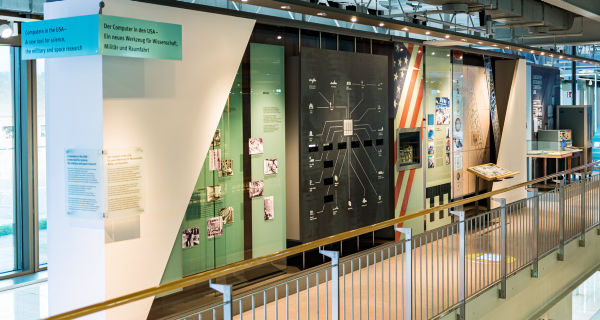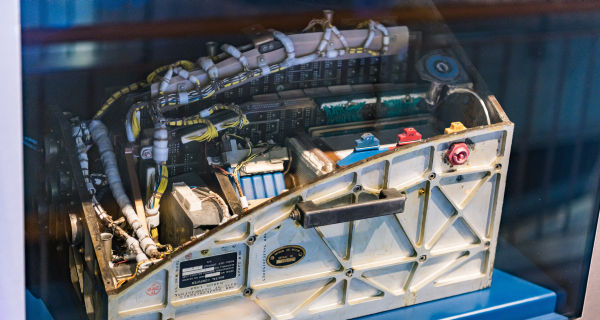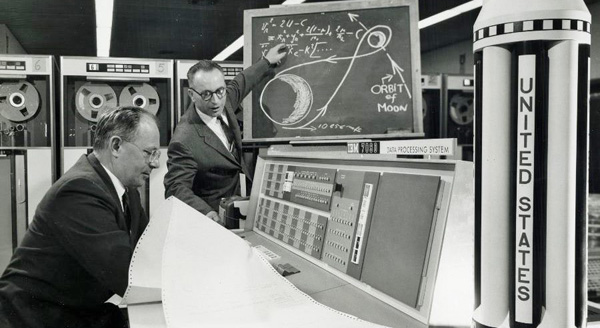The computer's long road from a laboratory set-up requiring constant attention to a machine capable of running for years without supervision and maintenance was actually accomplished relatively fast. The requirements of the armed forces and NASA (National Aeronautic and Space Administration) were one reason. Another was the rapid development of basic technology, including transistors and integrated circuits, circuit boards, wiring, and the systematization of programming techniques.
The computer that went into space
The "Computers in the USA" display wall shows aspects of this development. The computer that went into space is a focal point here - the on-board computer from the Gemini II mission. The outstanding features of this special computer, built in 1964, include full transistorization and a special magnetic core memory. The Gemini missions were primarily to test docking manoeuvres - one of the prerequisites for man's landing on the moon.
The experimental computers at universities that were developed on behalf of the armed forces following experience with the ENIAC could load programs into working memory in line with the concept put forward by John von Neumann. The highlight of this development process was the Whirlwind, which was built at the Massachusetts Institute of Technology (MIT) by Robert R. Everett and Jay W. Forrester. As a result of this development, the MIT team was given an order by the U.S. Air Force to build a prototype of an automatic air defence system. Following successful tests of the TX-0, IBM was commissioned to build the complete system. SAGE was in operation until the mid 1980s.
Reliability trumps everything
The landing on the moon in 1969 was the climax of a national effort that had been initiated by President Kennedy in 1961. With the successful completion of this mission, the computer had "grown up". The companies involved had learned to build reliable machines, and to develop complex, reliable software in large teams.
Computers depend on every one of their hundreds of thousands of circuits functioning reliably. The major increase in reliability of integrated circuits caused these circuits to become the central component of modern computer technology.


